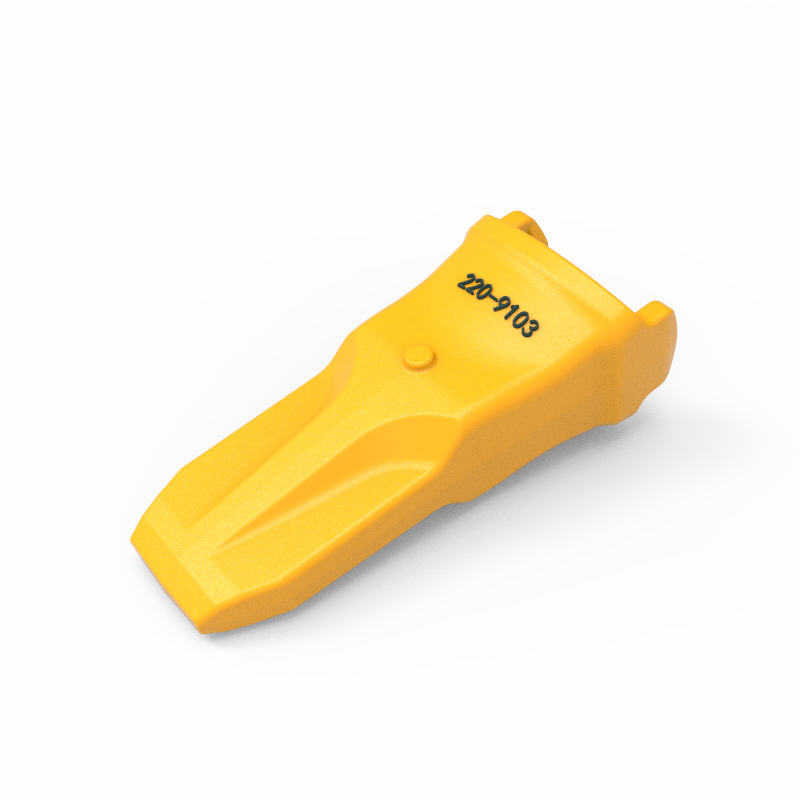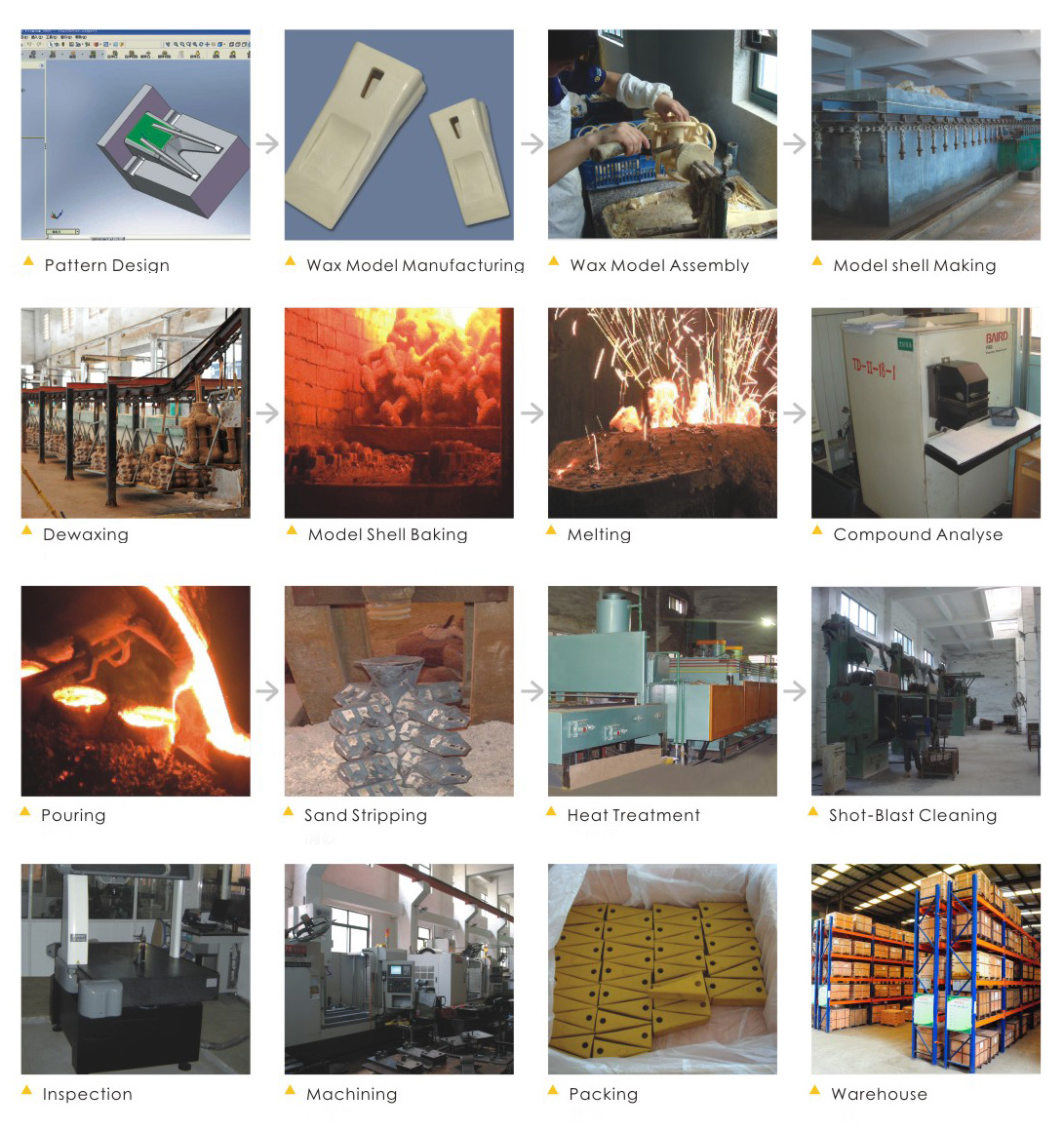Making high – quality bucket teeth involves multiple aspects, from material selection to manufacturing processes and quality control. Here are the key steps:
1. Material Selection
Choose appropriate alloys: High – quality alloy steels are commonly used for bucket teeth. For example, steels with high manganese content can provide good wear resistance and toughness. Manganese steel can work – harden under impact, which is ideal for the harsh working conditions of bucket teeth.
Consider heat – treatable materials: Some materials can be heat – treated to enhance their mechanical properties. For instance, alloy steels with elements like chromium, nickel, and molybdenum can be quenched and tempered to achieve high strength and hardness.
2. Design Optimization
Ergonomic shape: The design of bucket teeth should be optimized for efficient digging. A well – designed tooth shape can reduce the resistance during digging, which not only improves the working efficiency but also reduces the wear on the teeth. For example, a tapered shape at the tip can penetrate the material more easily.
Stress distribution: Analyze the stress distribution on the bucket teeth during operation. By using computer – aided design (CAD) and finite element analysis (FEA) software, engineers can ensure that the teeth can withstand the high – stress areas without premature failure. Reinforcement can be added to the critical parts of the design.
3. Manufacturing Process
Precision casting or forging:
Casting: Precision casting can produce complex shapes with high accuracy. Investment casting, for example, can create bucket teeth with smooth surfaces and fine details. However, it is important to control the casting process to avoid defects such as porosity and inclusions.
Forging: Forged bucket teeth generally have better mechanical properties than cast ones. Forging can align the grain structure of the metal, improving its strength and toughness. It is a more energy – intensive process but results in higher – quality products.
Heat treatment: After the initial forming process, heat treatment is crucial. Quenching and tempering can adjust the hardness and toughness of the bucket teeth. The heat – treatment parameters, such as temperature, heating time, and cooling rate, need to be carefully controlled to achieve the desired properties.
Non – destructive testing: Use non – destructive testing methods such as ultrasonic testing, magnetic particle testing, or X – ray testing to detect internal defects in the bucket teeth. This helps to ensure that the products meet the quality standards before they are shipped.
Mechanical property testing: Conduct tests such as hardness testing, tensile testing, and impact testing to verify the mechanical properties of the bucket teeth. Samples are taken from the production batch to ensure that the overall quality is consistent.
5. Surface Treatment
Coating: Applying a wear – resistant coating to the surface of the bucket teeth can further enhance their durability. For example, a ceramic coating can provide excellent wear resistance, reducing the wear rate during operation.
Galvanizing or painting: These treatments can protect the bucket teeth from corrosion, especially when they are used in wet or corrosive environments. Galvanizing creates a zinc layer on the surface, while painting provides a protective barrier against moisture and chemicals.
Post time: Apr-10-2025


